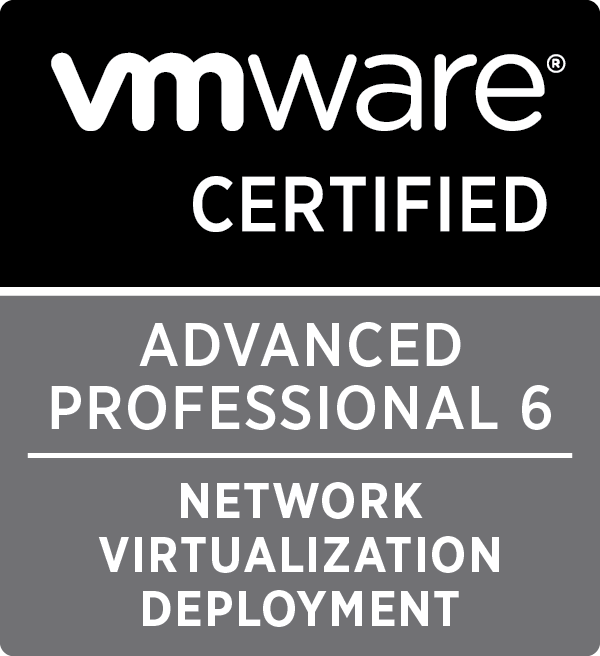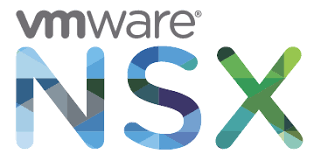Category : VMware

Written by Christopher Lewis on July 30, 2017 .
Skills and Abilities Objective 5.3 - Configure and Manage Role Based Access Control Implement identity service support for Active Directory, NIS, and LDAP with Single Sign-On (SSO). Manage User rights: Assign roles to user accounts Change a user role Delete/disable/enable a user account Objective Prerequisites The following prerequisites are assumed for this Objective: A working VMware vSphere 6.x environment. A working VMware NSX 6.x environment. Objective Breakdown Implement identity service support for Active Directory, NIS, and LDAP with Single Sign-On (SSO) Configuring SSO requires that NTP is configured correctly within the VMware NSX Manager.

Written by Christopher Lewis on July 30, 2017 .
Skills and Abilities Objective 8.1 - Administer and Execute calls using the VMware NSX vSphere API Construct and execute an API call using correct syntax and formatting Programmatically configure system parameters including: NSX controller syslog Modify DLR declared dead time Analyze, modify, and successfully retrieve configuration data using an existing API call. Objective Prerequisites The following prerequisites are assumed for this Objective: A working VMware vSphere 6.x environment. A working VMware NSX 6.

Written by Christopher Lewis on July 30, 2017 .
Skills and Abilities Objective 2.1 - Create and Manage Logical Switches Create/Delete Logical Switches Assign and configure IP addresses Connect a Logical Switch to an NSX Edge Deploy services on a Logical Switch Connect/Disconnect virtual machines to/from a Logical Switch Test Logical Switch connectivity Objective Prerequisites The following prerequisites are assumed for this Objective: A working VMware vSphere 6.x environment. A working VMware NSX-V 6.x environment. The following are additional prerequisites for creating a NSX Logical Switch:

Written by Christopher Lewis on July 30, 2017 .
Skills and Abilities Objective 1.3 - Configure and Manage Transport Zones Create Transport Zones according to a deployment plan Configure the control plane mode for a Transport Zone Add clusters to Transport Zones Remove clusters from Transport Zones Objective Prerequisites The following prerequisites are assumed for this Objective: A working VMware vSphere 6.x environment. The VMware NSX Manager has been deployed. At least one VMware NSX Controller has been deployed (if required).

Written by Christopher Lewis on July 30, 2017 .
Skills and Abilities Objective 1.2 - Prepare Host Clusters for Network Virtualization Prepare vSphere Distributed Switching for NSX Prepare a cluster for NSX Add/Remove Hosts from cluster Configure the appropriate teaming policy for a given implementation Configure VXLAN Transport parameters according to a deployment plan Objective Prerequisites The following prerequisites are assumed for this Objective: A working VMware vSphere 6.x environment. The VMware NSX Manager has been deployed. At least one VMware NSX Controller has been deployed (if required).

Written by Christopher Lewis on July 30, 2017 .
When you add a host from a VMware NSX enabled cluster, the NSX VIBs are automatically installed. The process steps for adding hosts to a VMware NSX enabled cluster is the same as if you were adding a host from a standard vSphere cluster. Prerequisites This post assumes the following: The target VMware ESXi host(s) are already connected to vCenter Server. The target VMware ESxi host(s) are already connected to any relevant Distributed Switches.

Written by Christopher Lewis on July 30, 2017 .
When you remove a host from a VMware NSX enabled cluster, the NSX VIBs are automatically removed. The process steps for removing hosts from a VMware NSX enabled cluster is the same as if you were removing a host from a standard vSphere cluster. Remove a Host from a VMware NSX enabled Cluster Note: These steps assume you are not even logged into vCenter Server. Skip the first few steps if you are!

Written by Christopher Lewis on July 29, 2017 .
Skills and Abilities Objective 1.1 - Deploy VMware NSX Infrastructure components Deploy the NSX Manager virtual appliance Integrate the NSX Manager with vCenter Server Configure Single Sign On Specify a Syslog Server Implement and Configure NSX Controllers Exclude virtual machines from firewall protection according to a deployment plan Objective Prerequisites The following prerequisites are assumed for this Objective: A working VMware vSphere 6.x environment. Objective Breakdown Deploy the NSX Manager virtual appliance See HOWTO: Deploy and Configure the VMware NSX Manager Virtual Appliance - Part 1 Specify a Syslog Server See HOWTO: Deploy and Configure the VMware NSX Manager Virtual Appliance - Part 2 Integrate the NSX Manager with vCenter Server (including SSO) See HOWTO: Deploy and Configure the VMware NSX Manager Virtual Appliance - Part 3 )

Written by Christopher Lewis on July 29, 2017 .
In this post, we’ll look at the final step of deploying the VMware NSX infrastructure, excluding VMs from the firewall protection. The default rule if DENY ALL which is due to security by design reasons but can cause all sorts of problems! VMware recommends that the following machines are excluded: vCenter Server (including Platform Services Controllers) Partner service virtual machines. Virtual machines that require promiscuous mode. The SQL server that your Windows-based vCenter uses.

Written by Christopher Lewis on July 27, 2017 .
In this post, we’ll look at how to deploy the VMware NSX Controllers in the NSX environment. Remember that the deployment of NSX Controllers are not required if the use case is just for the deployment of the Distributed Firewall (DFW). The NSX Controllers use node majority for HA, so there needs to be an odd number of them deployed. Officially, three (3) is the magic supported number, but in a homelab environment you could get away with just one.
- Operating a Private Cloud - Part 3: Creating a Pricing Card in VMware Aria Automation
- Operating a Private Cloud - Part 2: Creating a Pricing Card in VMware Aria Operations
- Operating a Private Cloud - Part 1: Understanding Pricing Cards in VMware Aria
- Zero2Hero - Using Aria Automation to Deploy Multiple Machines with Multiple Disks - Part 5
- Zero2Hero - Using Aria Automation to Deploy Multiple Machines with Multiple Disks - Part 4
